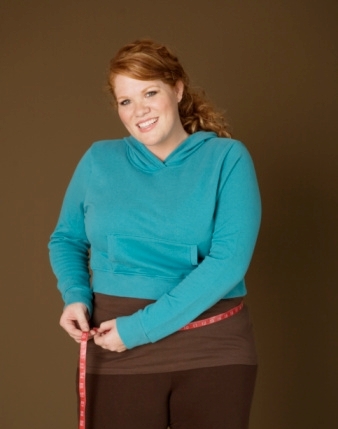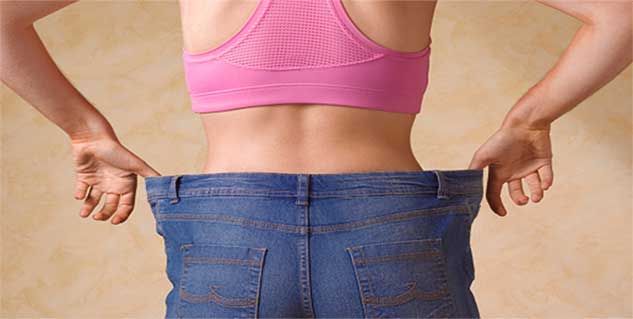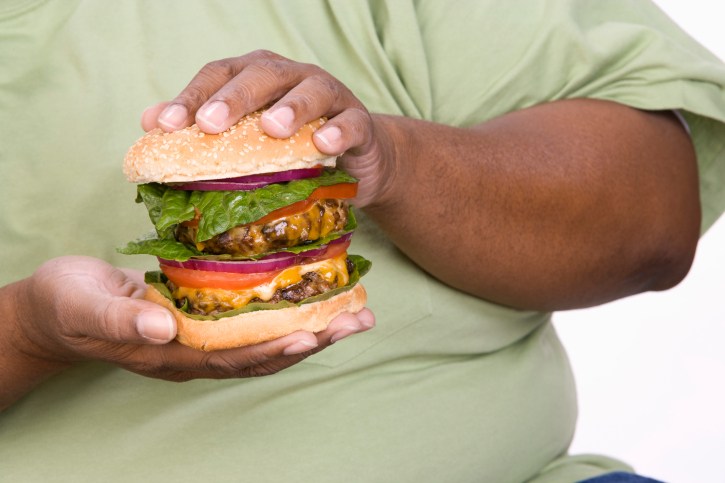Losing Fat Facts And Fiction
I receive literally hundreds of questions every week asking about a new diet fad or if some exercise gadget is the answer to fast weight loss. You only have to turn on your TV or open a magazine to see examples of these.
Unfortunately, finding factual information on the internet or in fitness magazines these days is getting to be more like looking for a needle in a haystack! You can find advertisements for anything from a "Six-second ab machine" to a "Lose 25 lbs in one week with the miracle ______ weight-loss supplement." And it goes without saying that claims that one product or another is the best, fastest, safest way to lose weight or shape your waistline are rampant. So who is a girl to believe?
The truth is, there is no easy answer to losing weight and shedding bodyfat. You have to find out what really works for your body through a process of some trial and error. Yes, despite all the claims, there is no one-size-fits-all exercise plan, nor is there a nutrition plan that fits everyone's unique metabolic needs. In other works, you'll probably have to kiss a few frogs to find a prince!
Of course, trying every new program out there can be time consuming and pretty demoralizing, if you ask me. I mean, it's hard enough to find the motivation and self-control to stop eating that Haagan Daaz that's calling your name without adding even more worries about exactly what to do and what not to do when it comes to eating smart and working out!
Over the years, I've found a few exercise myths out there that make the process even more difficult: some have truthful elements to them, and others are just flat out lies (or fabricated fictions). So, to help get you started off on the right path, I've pointed out the five biggest myths and helped set the record straight... revealing whether they are facts you can rely on or just plain old fiction (to be thrown in the bin). Ready? Great! Let's get started...
1) Doing 50 lunges a day will help slim down your thighs
As appealing as this idea is, it's impossible to "spot reduce" certain areas of the body through exercise. (Spot reducing means getting rid of fat by working the specific area where fat has accumulated on the body.) Quite simply, loss of bodyfat can only be obtained through a workout program combined with a healthy diet. To lose fat from certain areas, you must reduce overall bodyfat levels.
You see, when you're exercising, your muscles use fat from multiple places around your body, not just from the area you're working out. In addition, your genes help determine where your bodyfat is stored: many slim women have a larger tummy genetically, and even top models complain about their butts! Unfortunately, the major fat storage areas on your body are usually the first to feel the impact of one too many cookies and the last to see the results of your workout plan. However, a consistent workout program which combines cardio and weights, paired with proper eating habits, will help you get your body into the shape you desire.
2) Get up, get out, and work out'the best time to work out is early in the morning!
This one isn't entirely fictitious as research has shown that cardio done first thing in the morning on an empty stomach may help burn greater amounts of stored fat. However, this also depends on what type of person you are. A confirmed night owl isn't going to find the best results after dragging herself out of bed early in the morning to perform a half-assed workout while she's still in the "land of nod."
Also, with an early-morning weight-training program, many people get light-headed or woozy from training on an empty stomach. Or they just don't feel the same energy as they would after eating a light snack. If you're one of these types of people, then eat a small snack such as half of a meal replacement or a scoop of protein powder with a banana to fuel your workouts. This can help provide your body with the energy it needs for a top-notch workout.
3) If you exercise, you can eat whatever you want and not gain weight!
If only this were true... Unfortunately, this has got to be one of the biggest myths and one that leads to many failed workout programs. It is true that you need to be adequately fueled for your workouts, but there are limits to the amount and types of foods you should eat.
A sound nutrition plan goes hand-in-hand with a sound exercise regimen, and whatever your particular physique goal is, it's essential you eat a variety of macronutrients and avoid sugary, fast, and "junk" foods. It's vitally important as well to control your portion sizes (which should ideally be no more than the size of your clinched fist?not like the oversized portions typically served at most restaurants these days). This leads me to point 4...
4) Avoid pasta and bread at all costs if you're trying to lose weight!
Though the fad is thankfully dieing down, there's still an influx of low-carb diets on the market which all promote cutting carbs for fast, lasting weight loss. While people do in fact achieve results from these types of programs, such as Atkins or the South Beach Diet, there's no evidence that this weight loss can be sustained in the long run, especially once the person returns to normal eating habits (i.e., introduces carbohydrates back into her diet).
A better, longer lasting (and safer) way of losing weight would be to follow a sensible eating plan that provides a combination of all the macronutrients?carbohydrates, protein, and essential fats.
However, there is overwhelming evidence to support that the "types" of carbs you consume can impact your blood sugar levels, and as a result, it's much, much healthier to carefully choose carbohydrates that break down more slowly and therefore release glucose gradually into the bloodstream. These are called "low glycemic carbohydrates," and they don't cause the rapid spike in blood sugar levels, which is often attributed to increased fat storage, lack of energy, and cravings for other sugary carbs.
So instead of avoiding pasta, bread, and other carbs like the plague, choose the types of carbohydrates you eat more carefully. Whole-wheat products actually have a low glycemic index and are therefore good choices?whole-wheat pasta, whole-wheat bread, as well as whole-grain foods like brown rice, oatmeal, sweet potatoes, and vegetables are all great choices. Don't forget, though: any food can become fattening if eaten in excess?even healthy foods'so it's all about portion control.
5) Stop eating after 6:00 p.m. for a surefire way to lose weight!
I know this is one of Oprah's "golden eating rules," but if you didn't eat from 6:00 p.m. until the following morning, that's at least 12 hours that your body is going to be starved for food and therefore fuel.
To lose bodyfat, you should first work out how many calories your body requires per day. A good rule of thumb is to take the weight you want to weigh and multiply it by 12. (For example, if you currently weigh 145 lbs and you want to weigh 125 lbs, simply multiply your desired weight (125) by 12, which in this instance would equal 1,500 calories. Once you've exceeded the amount of calories you need throughout the day, any excess calories will be stored as fat on the body regardless of the time of day they're eaten. Providing you stick to your daily calorie allowance, you'll lose weight, regardless of when you consume those calories.
That said, it is advisable to spread your meals out evenly throughout the day to help support a strong metabolic rate (the rate your body burns the calories you consume). Eating five to six smaller meals over the course of the day not only helps with this bodily process but will also likely stop you from becoming too hungry and thus being tempted to immediately turn to the first foods you see (which are usually the wrong kinds of foods).
Also, bear in mind that if you don't eat enough during the day and then have your biggest meal at dinnertime, there's a good chance you'll store the extra calories as bodyfat simply because you're likely to be less active at nighttime when you're just relaxing or watching TV, followed by sleep.
Thus, I'd suggest you try flipping your largest meal to breakfast or lunchtime when it'll fuel you better for the whole day and then have a smaller meal at dinnertime. In fact, recent research has indicated that people who eat breakfast are 67% less likely to be obese than those who skip breakfast. It may take a couple of weeks to get used to the change, but you'll love the increased energy you get throughout the day in return.
Conclusion
Yes, you'll still have to rely on some trial and error to find the best way to build your best body. But hopefully, if you stick to what the latest science has to say and use the proven methods of eating sensibly and following a regular exercise program, you'll find it a little easier to stay on the right path... and not fall prey to some of the biggest, most destructive myths in dieting and exercise.
Please give the tips provided in this article a try, and drop me a note at [email protected] to let me know how they worked for you, or let me know if there's a particular "myth" you'd like me to uncover for you!
-
Diet Are French Fries Really A Vegetable
The government, nutritionists, doctors, and dietitians implore us to e
-
Raspberry Ketones For Fat Burning - Additional Effective Compared To Eating 90 Pounds Of Fresh Raspberries Daily.
The most up to date analysis has actuall
-
The Real Solution To Weight Loss
Dont just sit and lament the state of your body. There are many exerc
-
Artifical Grass Does Save Money And The Environment
Artifical grass is also called waterless grass since they are produce
-
Obesity: when to go for surgery
Bariatric surgery aims to surgically tre
-
Womens Health and Fitness - Reducing Cortisol Levels Can Help You To Lose Weight
It is now known that stress can actually stop you losing weight es
- DON'T MISS
- Lose Weight The Healthy Way With These Tips And Tricks
- A Few Possible Weight loss Swindles And What To Look Out For.
- Burn More Fat With Insulin Control The Secret Weight Loss Switch
- Slimming Pills – The Proper Way To Make Use Of Them And Obtain The Greatest Results
- The Best Meal Plan For Your Diet Personality
- Body Building Supplements
- What To Avoid At The Gym If You Want A Six Pack
- The Way To Quit Retaining Water – With No Dangerous Diuretics!
- Best Slimming That Effectively For Loosing Your Weight
- Kidney stones caused by excess zinc level toxicity in the body




